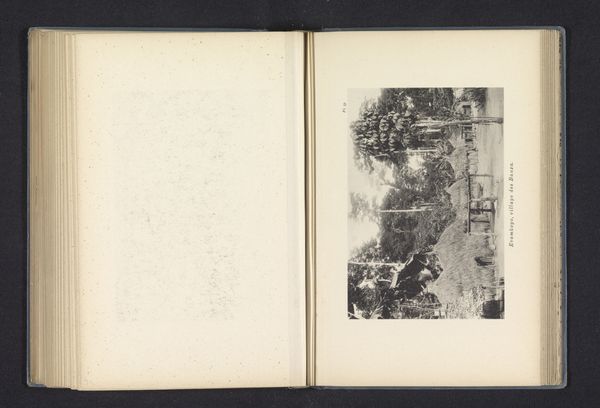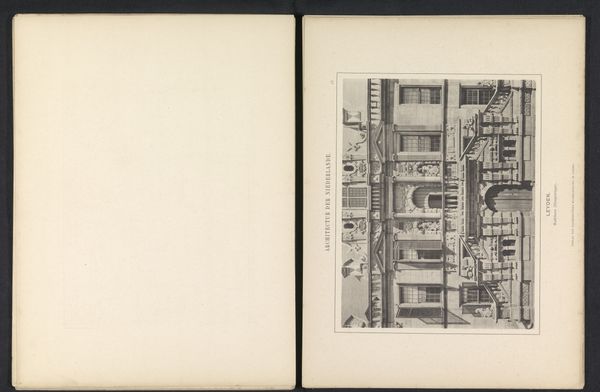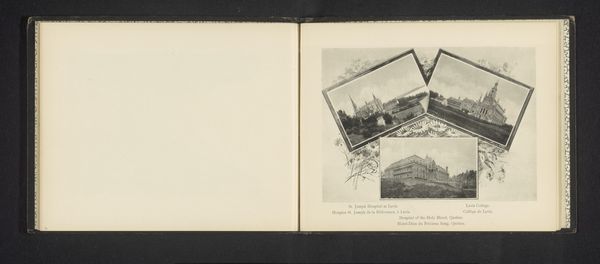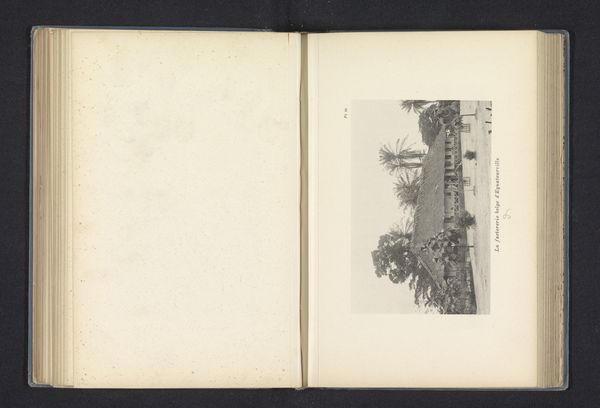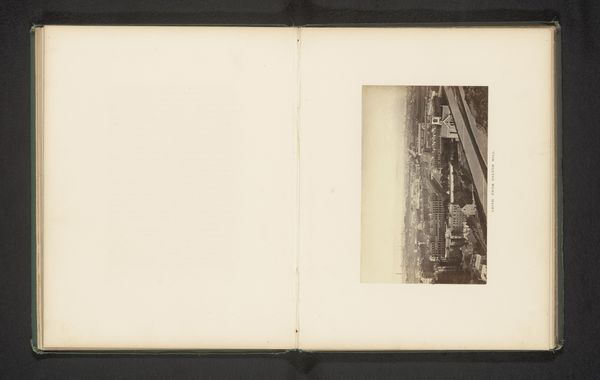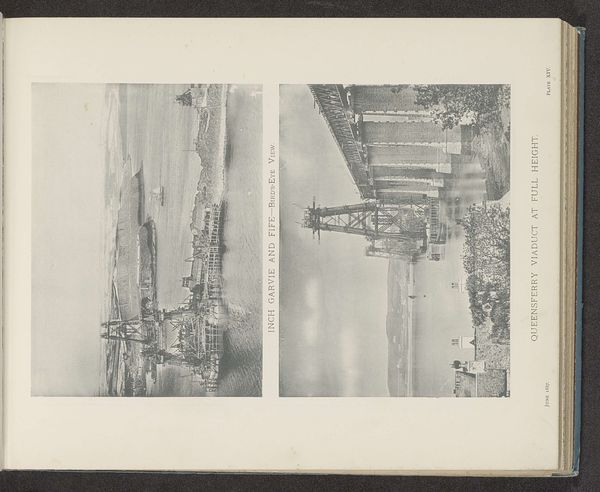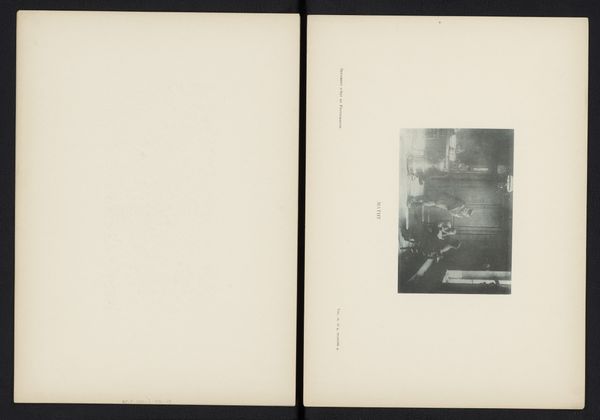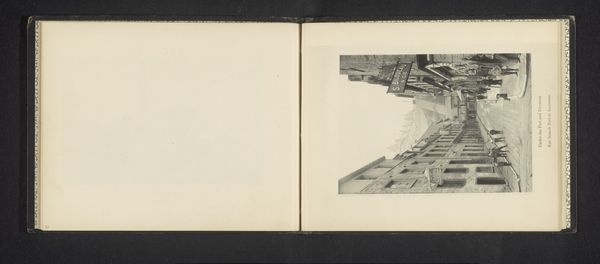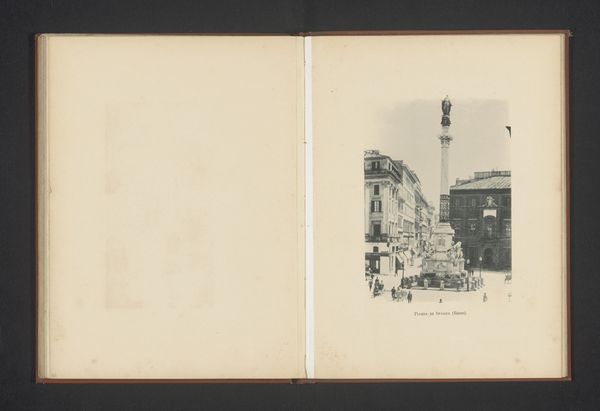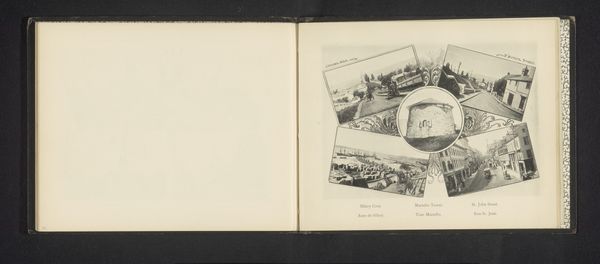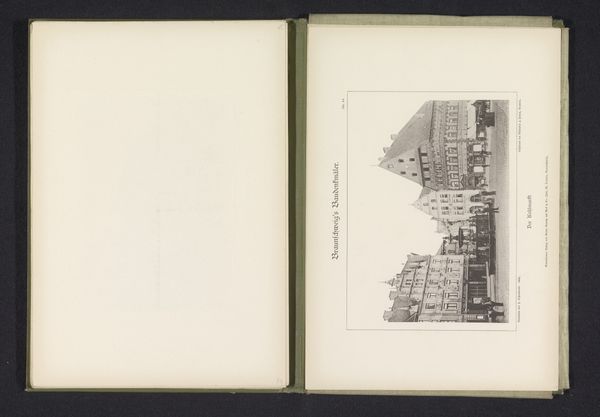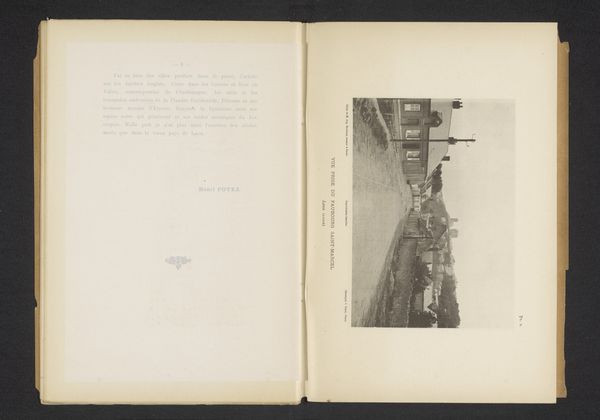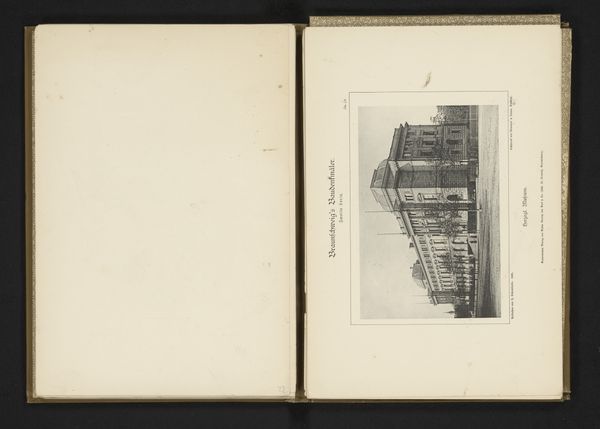
print, photography
# print
#
photography
#
cityscape
#
realism
Dimensions: height 160 mm, width 212 mm
Copyright: Rijks Museum: Open Domain
Curator: Today, we’re examining “Gezicht op een markt bij Ravnkloa in Trondheim,” which translates to "View of a Market at Ravnkloa in Trondheim." The artwork, attributed to Wilhelm Dreesen, captures a cityscape and predates 1897. It appears to be rendered through a print and photography process. What are your first impressions? Editor: Immediately, I’m struck by the labor inherent in the image. Look at all these people clustered on the quay, all actively engaged in the mechanics of trade and transport. The greyscale rendering feels appropriate, giving a weightiness and a sense of almost endless industry. Curator: Indeed, the photograph seems quite adept at creating depth. The eye is led from the foreground figures back to the receding masts of ships and then upwards toward the sky. Compositionally, the verticals provide a rigorous structure which contrasts nicely with the figures populating the marketplace. Editor: It’s not just composition for its own sake though, is it? All those masts are about more than lines – they’re tools of production, literally the levers by which goods and wealth enter this cityscape. And those human figures below, how do they experience their involvement? Curator: You point towards an interesting tension between the visual form and socio-economic realities. Perhaps this is an exercise in representing urban life in its visual complexity. There are a myriad of details captured, suggesting both the beauty and the challenges of urban living. Editor: Well, those challenges likely include difficult labor practices and inequitable distribution, topics worth addressing in the material circumstances represented by this image. The "realism" suggests, too, that these depictions aimed to document this lived reality, showing both the potential for growth but the existing toil. Curator: I concede the merit of those considerations. And while the formal structures shape our viewing experience, there’s also a documented record that reflects a socio-political dynamic, imbedded within Dreesen's artistic choices. Editor: It serves as a poignant reminder that art exists within, and comments on, broader systems of labor, production, and, ultimately, lived experiences. It calls for further interrogation into that late 19th-century reality.
Comments
No comments
Be the first to comment and join the conversation on the ultimate creative platform.
